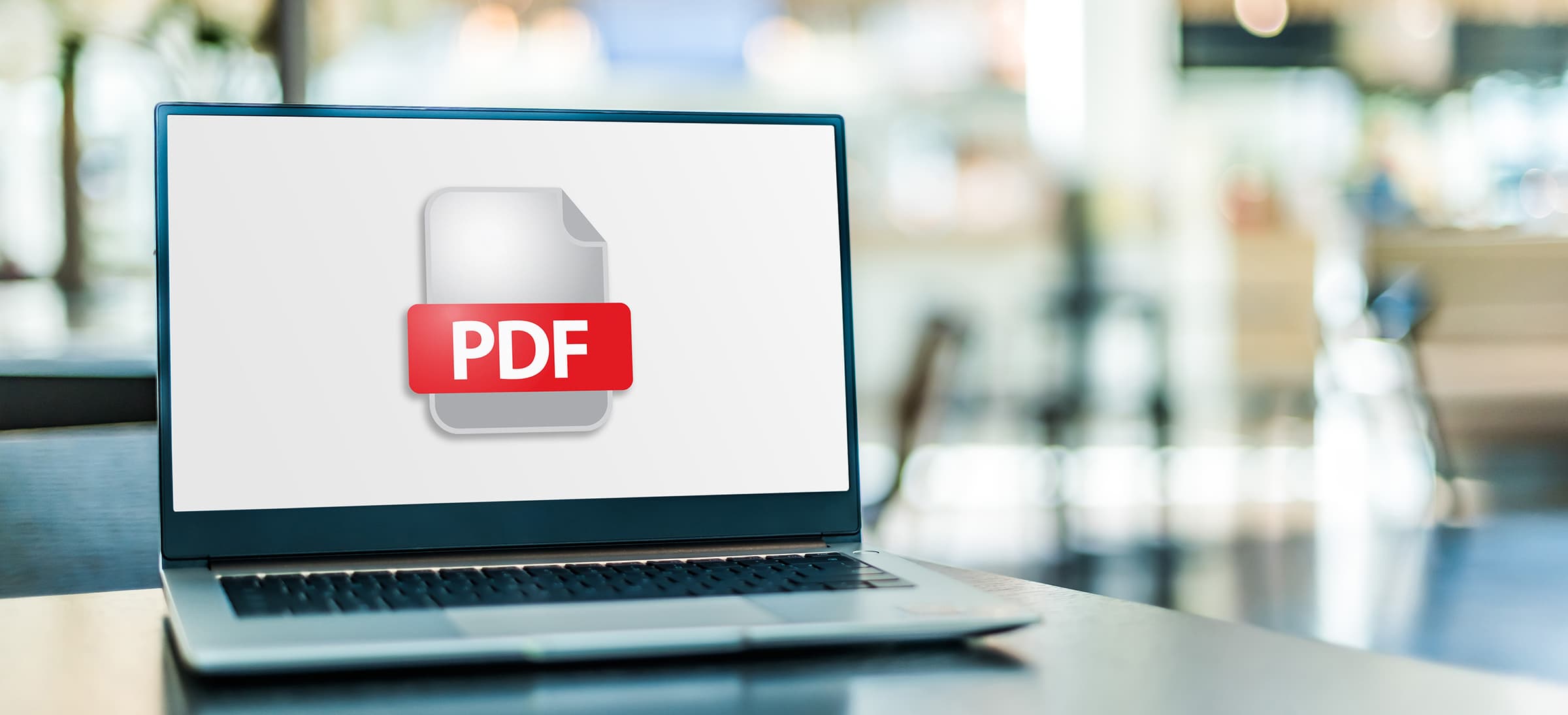

October 2, 2023
If you regularly create print-ready files, you probably use PDFs regularly. There are many PDF benefits when it comes to printing. Here’s how to use these helpful files to get the best results.
The term PDF stands for “portable document format.” Developed by the Adobe software company in the 1990s, it has become one of the most widely used file formats in the world. There are many PDF benefits from using this file format:
Most commercial printers prefer working with PDF files. Once you start using them regularly, you’ll discover that the many PDF benefits outweigh the small learning curve it takes to get familiar with them.
One of the main PDF benefits is the ability to use rich media, which means adding elements beyond text and images. With a PDF, you can include videos, animations, and more. Studies find that combining rich media with text increases the time that people spend reading your materials.
PDFs streamline your work by making it possible to sign documents, add timestamps, and produce legally binding signatures, and do it all online. Save time and money with documents that you and your customers can sign quickly and easily. Digital signatures are now accepted by most financial and legal institutions.
Have you ever been disappointed with the results of a print job? Chances are, you used the wrong resolution on your graphics, and they came out muddy. Most printers recommend a 300 dpi (dots per inch) resolution for print files. PDF files work well because they maintain the proper dpi size resolution without requiring larger files. They make it easy to print a run of high-quality materials—including brochures, catalogs, or flyers–when you need them.
Converting your documents into PDFs will save on storage. You can preserve up to 75% of your disk space simply by making this switch. That means savings on paying for cloud storage, equipment upgrades, and other costs that you might otherwise face.
One of the best PDF benefits is their portability. Because a PDF file can pack a lot of information and data into one small file, it is ready to go when you are. You don’t have to carry around a stack of documents and pictures, or take a chance on losing or damaging your files. PDFs are small, portable, and easy to share.
Your PDF will look the same across all media, including social media. Whether your readers use mobile apps or websites, your PDF will look the same and contain all the original information.
Online security is a major concern. Fortunately, a PDF works with data encryption and other security measures. You can rest assured your information is stored and transmitted safely.
One of the PDB benefits most people appreciate is their ability to foster teamwork. A shared PDF document can easily be shared and edited by several people. Many allow people to read others’ notes and make their own comments. Collaboration can lead to better products.
Working with PDFs will help you save time and money. Get started by putting these PDF benefits to work with these simple techniques. As you continue working with them, you’ll discover many ways they make your work more efficient.
You can convert any document to a PDF. If you’re using Microsoft Word or another word processing program, click on “Save as…”, give the document a name, and then choose PDF as your format.
You can also drag and drop the document directly into Adobe Acrobat. Right-click on the document, and choose “Convert to Adobe PDF.”
If you’re in one of the Adobe packages, you can streamline the process even more. Click on “File,” and choose “Create.” Now, you can choose from the following:
Once you learn to use Adobe, you’ll discover many other shortcuts for using PDFs to make all your printing projects easier.
Black and white printing: A color PDF can be printed in black and white, which is also known as grayscale or composite gray. To do this, go to the Print dialogue box and select “Print in Grayscale.”
Also known as n-up printing, this allows you to see more than one page of your PDF on a single page. You can specify the order you want them printed and whether you want them to appear horizontally or vertically on your page.
To do this, choose one of the following from the print dialog box:
After sharing a PDF document with others, you may see a lot of comments on the file. To print them for review, you can choose to print them in a summary list or leave them in place as notes.
Once you create a PDF file, you can update it or adapt it any time.
Using the Select and Copy tools in Adobe, you can reuse content you’ve already created in your PDF. To do this, use the Select tool and hover over an empty part of the page. You can also use the Control and Command keys to change the pointer into a rectangle. Drag the pointer around the text and images you want to copy.
Once you have the text and images selected, click on the “Edit” dialog box, and choose “Copy.” You can now copy the selected part to another part of the document, another document, or another application.
If you’re ready to use PDFs to their full potential, you can get help directly from Adobe. The company’s Acrobat Learn and Support site is designed for beginners who want to learn the basics of using PDFs. It also covers advanced features and includes in-depth tutorials. Go to the Adobe learning site to get started.
We hope you’ve enjoyed this guide to PDF benefits. As a professional printing company, we work with these files every day, and we enjoy helping our clients get the most from them. When you’re ready for professional printing, contact Publishing Xpress.
© 2025 Publishing Xpress. All Rights Reserved.